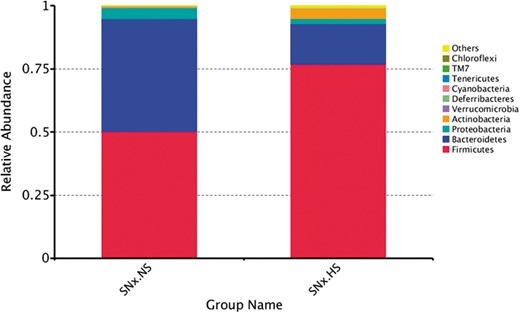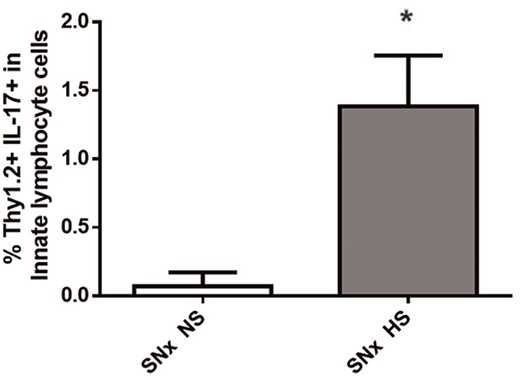-
PDF
- Split View
-
Views
-
Cite
Cite
Szu-Chun Hung, Tzu-Min Yang, Der-Cherng Tarng, SP260
HIGH SALT DIET ALTERS GUT MICROBIOTA LEADING TO INFLAMMATION AND PROGRESSION OF CKD, Nephrology Dialysis Transplantation, Volume 32, Issue suppl_3, May 2017, Page iii194, https://doi.org/10.1093/ndt/gfx145.SP260Close - Share Icon Share
INTRODUCTION AND AIMS: High salt intake is associated with risk of progression of CKD, but the mechanisms involved have not been elucidated. Gut microbiota responds rapidly to dietary factors and is increasingly recognized as a major contributor to diseases. In this study, we investigated the role of gut microbiota in high-salt-induced kidney injury superimposed on CKD.
METHODS: Gut microbiota and intestinal innate lymphoid cells (ILCs) were examined in subtotally nephrectomized mice with a normal salt (0.4% sodium) or high salt (4.0% sodium) diet from 8 to 12 weeks of age. We also determined inflammatory markers, blood pressure, and renal function/structure of mice with the different diets.
RESULTS: We found that high salt diet modified the composition of gut microbiota with an increased Firmicutes/Bacteroidetes ratio, a marker of gut dysbiosis, accompanied by the differentiation of intestinal IL-17-producing ILCs and systemic and renal inflammation. Compared to subtotally nephrectomized mice on a normal salt diet, high salt diet significantly increased systolic blood pressure, proteinuria, and glomerulosclerosis. IL-17 neutralization markedly attenuated the harmful renal effects of dietary salt. Notably, fecal transplantation from subtotally nephrectomized mice with a high salt diet into those with a normal salt diet also resulted in more severe kidney injury.

SP260 Figure 1

SP260 Figure 2





Comments